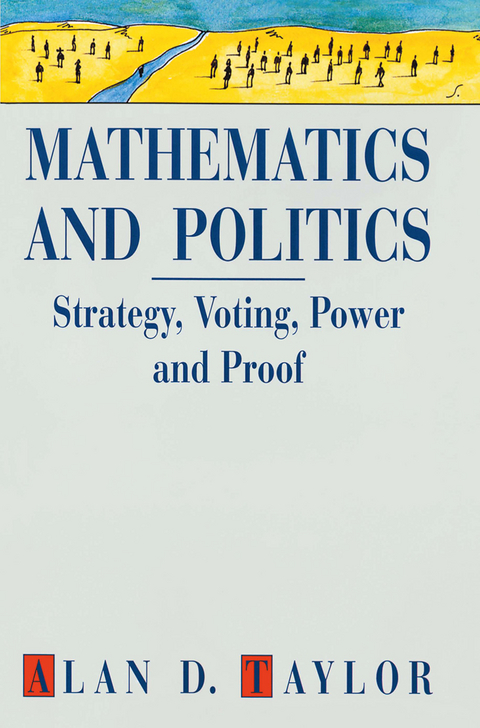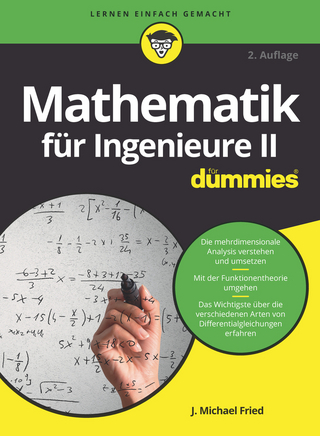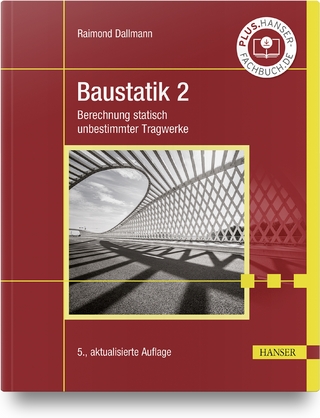
Mathematics and Politics
Springer-Verlag New York Inc.
978-0-387-94391-6 (ISBN)
- Titel erscheint in neuer Auflage
- Artikel merken
interest in a particular application, however, often depends on his or hergeneralinterestintheareainwhichtheapplicationistakingplace. My experience at Union College has been that there is a real advan tage in having students enter the course knowing thatvirtually all the applications will focus on a single discipline-in this case, political science. The level ofpresentation assumes no college-level mathematicalor social science prerequisites. The philosophy underlying the approach we have taken in this book is based on the sense that we (mathemati cians)havetendedtomaketwoerrorsinteachingnonsciencestudents: wehaveoverestimatedtheircomfortwithcomputationalmaterial,and we have underestimated their ability to handle conceptual material. Thus, while there is very little algebra (and certainly no calculus) in our presentation, we have included numerous logical arguments that students in the humanitiesand the socialscienceswill find accessible, but not trivial. The book contains five main topics: a m.odel of escalation, game theoretic models of international conflict, yes-no voting systems, political power, and social choice. The first partofthe text is made up of a single chapter devoted to each topic. The second part of the text revisits each topic, again with a single chapter devoted to each. The organizationofthe bookisbasedonpedagogicalconsiderations, with the material becoming somewhat more sophisticated as one moves through the ten chapters. On the other hand, within any given chap terthere is little reliance on material from earlierchapters, except for those devoted to the same topic.
1 Escalation.- 1.1. Introduction.- 1.2. Game-Tree Analyses.- 1.3. Limitations and Back-of-the-Envelope Calculations.- 1.4. Statement of O’Neill’s Theorem.- 1.5. Conclusions.- Exercises.- 2 Conflict.- 2.1. Introduction.- 2.2. Dominant Strategies and Nash Equilibria.- 2.3. Prisoner’s Dilemma.- 2.4. A Game-Theoretic Model of the Arms Race.- 2.5. Chicken.- 2.6. Game-Theoretic Models of the Cuban Missile Crisis.- 2.7. Conclusions.- Exercises.- 3 Yes-No Voting.- 3.1. Introduction.- 3.2. Swap Robustness and the Nonweightedness of the Federal System.- 3.3. Trade Robustness and the Nonweightedness of the Procedure to Amend the Canadian Constitution.- 3.4. Statement of the Characterization Theorem.- 3.5. Conclusions.- Exercises.- 4 Political Power.- 4.1. Introduction.- 4.2. The Shapley-Shubik Index of Power.- 4.3. Calculations for the European Economic Community.- 4.4. A Theorem on Voting Blocs.- 4.5. The Banzhaf Index of Power.- 4.6. Two Methods of Computing Banzhaf Power.- 4.7. Ordinal Power: Incomparability.- 4.8. Conclusions.- Exercises.- 5 Social Choice.- 5.1. Introduction.- 5.2. Five Examples of Social Choice Procedures.- 5.3. Four Desirable Properties of Social Choice Procedures.- 5.4. Positive Results—Proofs.- 5.5. Negative Results—Proofs.- 5.6. The Condorcet Voting Paradox.- 5.7. A Glimpse of Impossibility.- 5.8. Conclusions.- Exercises.- 6 More Escalation.- 6.1. Introduction.- 6.2. Statement of the Strong Version of O’Neill’s Theorem.- 6.3. Proof (by Mathematical Induction) of the Strong Version of O’Neill’s Theorem.- 6.4. Vickrey Auctions.- 6.5. Vickrey Auctions as a Generalized Prisoner’s Dilemma.- 6.6. Conclusions.- Exercises.- 7 More Conflict.- 7.1. Introduction.- 7.2. The Yom Kippur War.- 7.3. The Theory of Moves.- 7.4. Models of Deterrence.-7.5. A Probabilistic Model of Deterrence.- 7.6. Two-Person Zero-Sum Games.- 7.7. Conclusions.- Exercises.- 8 More Yes-No Voting.- 8.1. Introduction.- 8.2. A Magic Square Voting System.- 8.3. Dimension Theory and the U.S. Federal System.- 8.4. Vector-Weighted Voting Systems.- 8.5. Conclusions.- Exercises.- 9 More Political Power.- 9.1. Introduction.- 9.2. The Johnston Index of Power.- 9.3. The Deegan-Packel Index of Power.- 9.4. The Power of the President.- 9.5. Ordinal Power: Comparability.- 9.6. The Chair’s Paradox.- 9.7. Conclusions.- Exercises.- 10 More Social Choice.- 10.1. Introduction.- 10.2. Social Welfare Functions.- 10.3. May’s Theorem for Two Alternatives.- 10.4. Arrow’s Impossibility Theorem.- 10.5. Single Peakedness—Theorems of Black and Sen.- 10.6. Conclusions.- Exercises.- Attributions.- References.
| Erscheint lt. Verlag | 9.3.1995 |
|---|---|
| Reihe/Serie | Textbooks in Mathematical Sciences |
| Zusatzinfo | XIV, 284 p. |
| Verlagsort | New York, NY |
| Sprache | englisch |
| Maße | 155 x 235 mm |
| Themenwelt | Mathematik / Informatik ► Mathematik ► Angewandte Mathematik |
| Mathematik / Informatik ► Mathematik ► Wahrscheinlichkeit / Kombinatorik | |
| Sozialwissenschaften ► Politik / Verwaltung ► Politische Theorie | |
| Sozialwissenschaften ► Soziologie ► Empirische Sozialforschung | |
| Wirtschaft ► Volkswirtschaftslehre | |
| ISBN-10 | 0-387-94391-9 / 0387943919 |
| ISBN-13 | 978-0-387-94391-6 / 9780387943916 |
| Zustand | Neuware |
| Haben Sie eine Frage zum Produkt? |
aus dem Bereich



